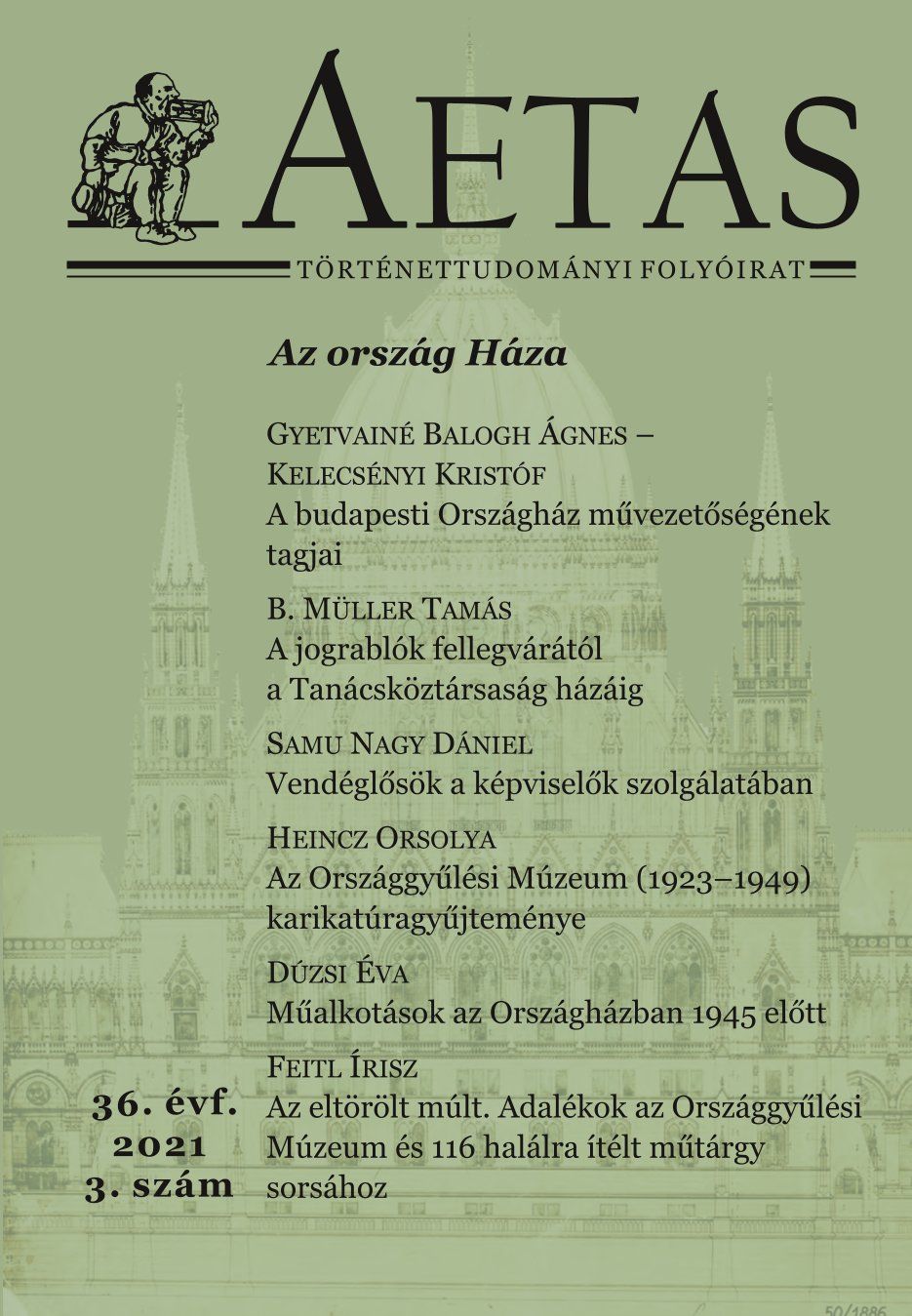A jograblók fellegvárától a Tanácsköztársaság Házáig
From Haven of Tyrants to the House of the Soviet Republic
Author(s): Tamás B. MüllerSubject(s): Pre-WW I & WW I (1900 -1919)
Published by: AETAS Könyv- és Lapkiadó Egyesület
Summary/Abstract: Political parties have always utilized symbolism to get their messages across, or build, strengthen, and mobilise their base. It can be present in the public actions of political figures, or in the use of certain symbols either visually or in language. This study analyses the use of the Hungarian Parliament Building as a political symbol in the Socialist movement of the first half of the 20th century and during the period of the Hungarian Soviet Republic. The Parliament was used as a symbol to further society’s understanding of the political goals and ideology of the Socialist movement, and later the Communist dictatorship, as well as to mobilise the regime’s base. The first section of the article uses the articles of Népszava and the posters of Mihály Bíró to present how the Parliament was used in the political marketing and suffrage propaganda of the Social Democratic Party of Hungary. The second section examines the changes in the meaning of this symbol following the democratic revolution of October 1918. After the Social Democratic Party acquired leadership in Autumn 1918, and later when the Soviet Republic was established in March 1919, the symbol of the Parliament had to take on different meanings in propaganda. The final section of the article discusses the initial and long-term goals of this transformation process through the analysis of the works displayed at the Parliament Square during the regime’s May Day celebration, and the decorations of the soviet congress and party congress in June 1919.
Journal: AETAS - Történettudományi folyóirat
- Issue Year: 2021
- Issue No: 3
- Page Range: 25-41
- Page Count: 17
- Language: Hungarian

